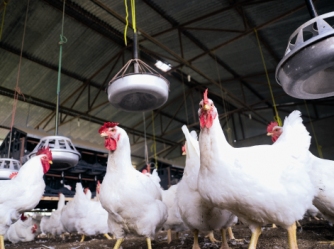Quality eggs from adequate nutrition

Modern layers and breeders are expected to produce a large number of high-quality eggs. This, however, demands well-balanced nutrition. Shellbiotic supports reaching that goal.
By Vitamex
Good peak productions are achieved with today’s genetics of laying hens and broiler breeders. The real challenge is to maintain persistency while maximising the number of saleable consumption or hatching eggs. This challenge has prompted feed producers to develop products and feed strategies that optimise egg quality and laying persistence.
In order to achieve this goal, Vitamex has developed Shellbiotic. This product is based on a synergistic combination of Aromabiotic, lactic acid and organic calcium. With this composition, not only are the favourable effects of Aromabiotic on intestinal health and egg production retained, but they are also supported by the positive effects of lactic acid and organic calcium on egg quality.
Aromabiotic ensures increased calcium absorption, thereby enhancing the supply of energy for intestinal epithelial cells. This is important for the active transportation of calcium. It also increases absorptive capacity, which is important for the passive transportation of calcium. Shellbiotic’s readily-soluble organic calcium is aimed at increasing the availability of nutrients for egg and eggshell production.
Higher number of eggs
The addition of Aromabiotic to the feed of laying hens has a significant effect on laying percentage, daily egg mass as well as feed conversion.
In the Benelux, a number of field trials have been conducted with broiler breeders whereby in the second phase of the laying cycle, 1 kg of Shellbiotic/mt was added on top of the feed of the test group. Depending on the farm, this was done when the birds were 31, 41 or 45 weeks of age. On the three farms where it was used, the laying percentage was studied. When the relation of the laying percentages in the Shellbiotic group and the control group was analysed as a function of age, an increase of over 10% could be observed, beginning mainly from week 45.
Stronger shell
As a parameter for the effect of Shellbiotic on the strength of the eggshell, the difference in the percentage of cracked eggs between the test group and the control group was studied. The percentage of cracked eggs appeared to decline in the test group compared to the control, whereby the effect became more pronounced as the test advanced. These results were confirmed when the degree of shell deformation was studied by exerting a pressure of 0.5 kg on the eggs. During the course of the trial, the eggs of the Shellbiotic group demonstrated less shell deformation compared to the control eggs. For broiler breeders the better eggshell quality reduces the chance of bacterial infection, as a result of which fewer E. Coli problems are to be expected among the day-old chicks.
Better albumen quality
Along with the percentage of cracked eggs, the albumen quality also constitutes a major parameter. Albumen quality is expressed in Haugh Units, which are defined on the basis of the height of the thick albumen in relation to egg weight. The higher the number of Haugh Units, the longer eggs can be stored and the better the chick quality. The test results, in which the relation of the Haugh units of Shellbiotic and the control is analysed as a function of age, show a significant increase in the albumen quality after 45 weeks of age.
More information www.vitamex.com













